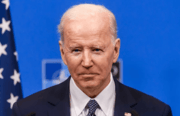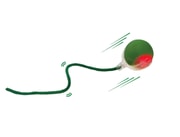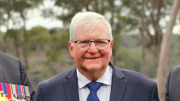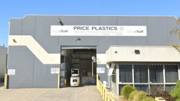Election showdown: Housing help or tax relief—where does your vote land?
By
Maan
- Replies 11
Campaign launches often signal a turning point in any federal election—but what happens when both major parties decide to go all in on the same day?
As the race tightens and the pressure mounts, cost of living promises, battleground strategies, and polling numbers are shaping the national conversation.
Here’s what unfolded as the federal election campaign entered its next critical stage.
The federal election campaign entered a pivotal stage on 20 April, as both major parties officially launched their campaigns on opposite sides of the country.
Labor Leader Anthony Albanese and the Prime Minister fronted their campaign in Perth, while Opposition Leader Peter Dutton hosted the Coalition’s launch in Sydney.
Labor chose Perth as a nod to its strong 2022 performance, where it claimed four key seats that helped deliver a majority government.
Meanwhile, the Coalition aimed its sights at Western Sydney—opting for a location with strategic electoral significance as it looked to lock down battlegrounds like Bennelong and Werriwa.
Internal polling suggested those seats remained tightly contested, reinforcing the Coalition’s focus on cost of living and economic management.
The election’s primary battleground shaped up to be household budgets, with both parties unveiling multibillion-dollar proposals to win over voters feeling the financial squeeze.
Labor committed to a $10 billion housing plan that it claimed would support the construction of 100,000 homes and assist Australians trying to enter the property market.
As part of the plan, Mr Albanese confirmed that a re-elected Labor government would offer a mortgage guarantee to first home buyers with just a five per cent deposit.
‘When a young person saves a five per cent deposit, my government will guarantee the rest with their bank,’ Mr Albanese said.
‘This will help people buy their first home faster, without paying the burden of Lenders Mortgage Insurance.’
Under the scheme, eligible buyers would be spared from lenders mortgage insurance—often required when a deposit falls below 20 per cent—potentially lowering upfront costs by tens of thousands.
Labor positioned the housing policy as part of a broader push to address economic pressures, signalling its intent to keep affordability front and centre.
The Coalition, in contrast, promised a one-off $1,200 tax cut for Australians earning under $144,000 a year.
Mr Dutton framed Labor’s existing tax relief as an ‘election bribe’, vowing instead to repeal those measures and provide a more generous offset.
The opposition’s platform hinged on its ability to win voter trust on cost of living, the economy, and national security.
Although the Coalition did not announce its defence strategy at the launch, it flagged plans to increase military spending from 2.3 per cent of GDP to roughly 2.5 per cent.
Despite trailing in polls earlier in the year, Labor appeared to regain momentum heading into the campaign period.
The most recent Newspoll placed Labor ahead 52–48—mirroring its performance in the 2022 election.
That left political observers speculating whether Mr Albanese’s government could again secure a majority or be forced to form a minority government.
Voting was set to open on 22 April ahead of the 3 May election.
To dive deeper into the details of the federal election campaign promises, here’s an insightful video that breaks it all down.
Watch the video now to get a clearer picture of what each party is offering this election.
Source: Youtube/9 News Australia

With both parties making billion-dollar promises to ease the cost of living, which plan do you think will make the biggest difference for everyday Australians? Let us know your thoughts in the comments.
As the race tightens and the pressure mounts, cost of living promises, battleground strategies, and polling numbers are shaping the national conversation.
Here’s what unfolded as the federal election campaign entered its next critical stage.
The federal election campaign entered a pivotal stage on 20 April, as both major parties officially launched their campaigns on opposite sides of the country.
Labor Leader Anthony Albanese and the Prime Minister fronted their campaign in Perth, while Opposition Leader Peter Dutton hosted the Coalition’s launch in Sydney.
Labor chose Perth as a nod to its strong 2022 performance, where it claimed four key seats that helped deliver a majority government.
Meanwhile, the Coalition aimed its sights at Western Sydney—opting for a location with strategic electoral significance as it looked to lock down battlegrounds like Bennelong and Werriwa.
Internal polling suggested those seats remained tightly contested, reinforcing the Coalition’s focus on cost of living and economic management.
The election’s primary battleground shaped up to be household budgets, with both parties unveiling multibillion-dollar proposals to win over voters feeling the financial squeeze.
Labor committed to a $10 billion housing plan that it claimed would support the construction of 100,000 homes and assist Australians trying to enter the property market.
As part of the plan, Mr Albanese confirmed that a re-elected Labor government would offer a mortgage guarantee to first home buyers with just a five per cent deposit.
‘When a young person saves a five per cent deposit, my government will guarantee the rest with their bank,’ Mr Albanese said.
‘This will help people buy their first home faster, without paying the burden of Lenders Mortgage Insurance.’
Under the scheme, eligible buyers would be spared from lenders mortgage insurance—often required when a deposit falls below 20 per cent—potentially lowering upfront costs by tens of thousands.
Labor positioned the housing policy as part of a broader push to address economic pressures, signalling its intent to keep affordability front and centre.
The Coalition, in contrast, promised a one-off $1,200 tax cut for Australians earning under $144,000 a year.
Mr Dutton framed Labor’s existing tax relief as an ‘election bribe’, vowing instead to repeal those measures and provide a more generous offset.
The opposition’s platform hinged on its ability to win voter trust on cost of living, the economy, and national security.
Although the Coalition did not announce its defence strategy at the launch, it flagged plans to increase military spending from 2.3 per cent of GDP to roughly 2.5 per cent.
Despite trailing in polls earlier in the year, Labor appeared to regain momentum heading into the campaign period.
The most recent Newspoll placed Labor ahead 52–48—mirroring its performance in the 2022 election.
That left political observers speculating whether Mr Albanese’s government could again secure a majority or be forced to form a minority government.
Voting was set to open on 22 April ahead of the 3 May election.
To dive deeper into the details of the federal election campaign promises, here’s an insightful video that breaks it all down.
Watch the video now to get a clearer picture of what each party is offering this election.
Source: Youtube/9 News Australia
Key Takeaways
- Labor and the Coalition launched their federal election campaigns on 20 April from Perth and Sydney, respectively.
- Cost of living dominated the agenda, with Labor proposing a $10 billion housing scheme and the Coalition offering $1,200 tax cuts.
- Labor aimed to help first home buyers with a mortgage guarantee, while the Coalition targeted economic and national security issues.
- Labor led the latest Newspoll 52–48, with early voting set to begin on 22 April ahead of the 3 May election.
With both parties making billion-dollar promises to ease the cost of living, which plan do you think will make the biggest difference for everyday Australians? Let us know your thoughts in the comments.








